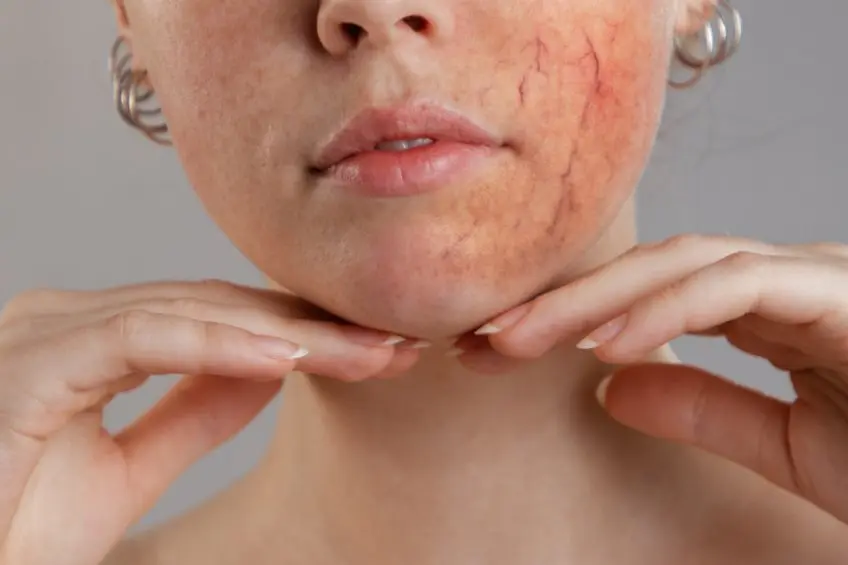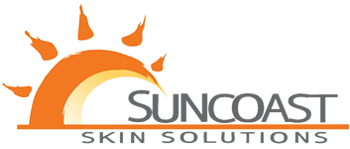
Most people do not look at a blush and immediately assume that they are dealing with a skin condition. In fact, this mild redness is often considered to be an attractive trait. However, constant blushing or flushing of the skin is often one of the warning signs of Rosacea.
Rosacea is a common skin condition. It is characterized by visible blood vessels on the face. You may also experience tiny bumps filled with pus on the skin. The symptoms and signs of Rosacea can flare up for weeks or even months before they temporarily go away. However, this doesn’t mean that the issue is resolved. In most cases, the symptoms will almost certainly flare up again in the near future.
The problem is that the signs of Rosacea are often mistaken for acne, natural ruddiness, or other skin issues. Therefore, most people fail to seek treatment to manage the condition. Being aware of the signs of Rosacea will help you spot the condition.
Warning Signs of Rosacea
While anyone can be affected by this skin condition, Rosacea is most common among middle-aged white women. However, anyone who notices the following warning signs should visit a dermatologist for a proper diagnosis.
· Blush or Flushing of the Skin
One of the earliest yet most overlooked symptoms of Rosacea is the frequent blushing of your skin. The reason it often goes unnoticed is that most people start believing it is their natural complexion. However, frequent flushing of the skin is one of the most common signs of Rosacea.
While a simple blush doesn’t always indicate this skin condition, it might be worth getting it checked out if the redness doesn’t go away in a few days, especially if you developed it in a short period of time.
· Consistent Facial Redness
Another one of the early signs of Rosacea is a consistent redness on the face or other areas of the body. This symptom often resembles a blush or a sunburn when it first appears. However, the redness does not clear up in time. Some patients also report that the redness stings during a flare-up and might also feel scaly and rough when touched.
· Eruptions that Look Like Acne or Breakouts
You may also notice that the redness is accompanied by these small bumps that could be pus-filled or solid. It is very easy to mistake these bumps for pimples or acne that come and go. However, the difference is that these breakouts do not contain any blackheads. There might also be plaques, which are raised patches of skin. Similar to the redness, your skin may sting or burn during flare-ups.
· Excessive Dryness
Moderate to severe cases of Rosacea leave your skin inflamed, stressed, and more sensitive to external irritants. As a consequence, the protective barrier of the skin deteriorates and causes the skin to become vulnerable to pollutants, soaps, dry air, and other harsh elements that dry out the skin.
· Spider Veins
Spider veins are basically broken blood vessels that become visible on the skin. While spider veins aren’t always a symptom of Rosacea, it is certainly something to get checked out to rule out any possibilities. In general cases, spider veins tend to appear on the legs. However, in patients with Rosacea, these broken blood vessels appear on the face.
· Ocular Rosacea
This condition could be considered a subtype of Rosacea. People with Ocular Rosacea may notice swollen eyelids and frequent styes. Potential side effects also include irritation, burning sensations, puffiness, a watery appearance, and dryness around the eyes.
For some people, the warning signs for Ocular Rosacea appear before other signs. It is also possible that developing Ocular Rosacea may eventually lead to Rosacea, but it is not always a precedent to the other symptoms.
· Enlarged Skin – Especially Around The Nose
A later side effect of this skin condition is an enlarged nose. Over time, Rosacea can lead to the thinking of the skin, which causes the nose to appear larger than it did previously. While other parts of the skin, such as the forehead, cheeks, chin, and ears, may also be affected by this, the effects are most visible on the nose.
However, by the time the skin thickening starts, you may already be experiencing at least one or two of the above symptoms for quite some time. However, if you’ve mistaken the previous symptoms for blushing or acne, the skin thickening should be a good reason to visit a dermatologist.
Triggers
It is also important to be aware of the triggers that may lead to a flare-up. When you are able to determine what is causing the condition, it becomes easier to keep things in control. Following are some of the common triggers that affect most Rosacea patients.
- Sun exposure
- Hot weather
- Hot showers or baths
- Indoor heat
- Stress
- High humidity
- Dry winds
- Spicy or hot foods and drinks
- Certain cosmetics and skin care products
- Using steroids for a long time
Keep in mind that this isn’t a comprehensive list of triggers that may cause flare-ups. Every Rosacea patient is unique, and what affects one person may not make any difference to another. These are just common examples that may worsen the condition. However, it’s up to you to keep an eye on how external factors are affecting your skin.
Treatment
Unfortunately, there isn’t a permanent treatment for Rosacea. Once you develop the skin condition, it will flare up again sooner or later. However, with the right treatment and preventive measures, it is possible to keep the condition under control. This is why it is necessary to visit a dermatologist as soon as you notice any of the above signs of Rosacea. Even if you don’t have the condition, it is better to rule out the possibility for your peace of mind.
If you have noticed any of the above symptoms and want to visit a dermatologist to have it checked out, head over to Suncoast Skin Solutions for a consultation today.
SunCoast Skin Solutions Dermatology offices are located in Tampa / Hillsborough, St. Pete / Pinellas County, Brandon, Lutz, Winter Haven, Largo, Riverview, Brooksville, Ocala, and Daytona Beach, Sarasota, Punta Gorda, Seminole, Florida. Contact us at 1-844-786-3376 or click here.

Recent Comments